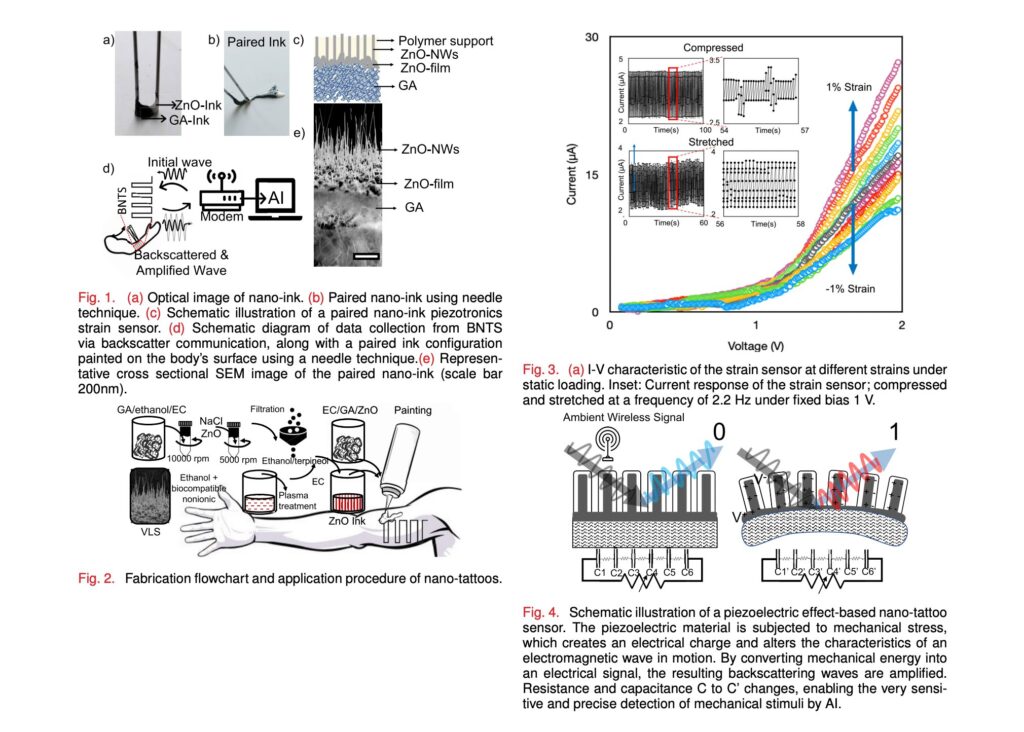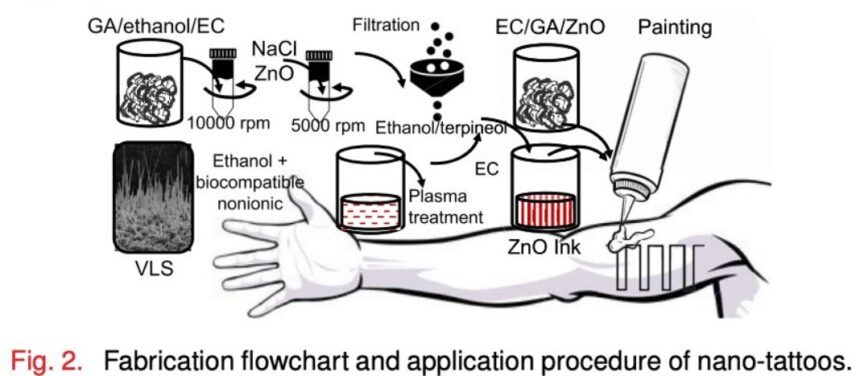The realm of wearable technology is continuously evolving, and recent developments have brought us closer to a future where electronic tattoos could revolutionize healthcare monitoring. A recent tweet by Sterling Crispin highlights the progress made in this field, describing advancements in tattoos embedded with nanowires capable of passively measuring brain activity, movement, blood pressure, and more. This article delves into the details of this exciting technology and its potential implications.

NanoTattoos: A New Frontier in Wearable Technology
Sterling Crispin’s tweet sheds light on an intriguing development in the world of electronic tattoos. These tattoos, when placed on the head or arm, utilize embedded nanowires to measure various physiological parameters.
Dr. Ergen and his colleagues have successfully created an electronic tattoo that does not require an external power source. Instead, it functions by leveraging a signal emitted from a smartphone, which bounces off the tattoo. When the tattoo bends due to body movement, it alters the signal, allowing for measurements to be taken.
The key breakthrough in this technology lies in the use of piezoelectric materials within the tattoos. These materials generate a small electrical signal when subjected to bending or deformation.
By employing two layers of ink—a zinc oxide-based ink with nanowires on top of a graphene aerogel-based conductor ink—the tattoo becomes biocompatible and capable of passively generating electrical signals. Similar to RFID chips, the tattoos utilize signal backscattering to achieve their functionality.

Applications and Future Prospects
While the concept of tattoos that can measure brain activity or physiological parameters is not entirely new, the recent advancements presented by Dr. Ergen and his team represent a significant step forward. Although these tattoos are not yet at a stage where the general public would willingly adopt them, the potential medical applications are exciting.
![The ink used for the nanotattoos is actually two inks in one—a bottom layer containing graphene [black] and a top layer with embedded nanowires [white].ISTANBUL TECHNICAL UNIVERSITY/IEEE](https://newthingsdigest.com/wp-content/uploads/2023/06/image-46.png)
Currently, experimental tattoos that change color based on glucose levels are being explored. However, their practical implementation is yet to be realized. With the progress being made in electronic tattoos, it is reasonable to be optimistic about the future. In the next five years, it is conceivable that medically useful applications of these tattoos may emerge, revolutionizing the field of healthcare monitoring.
The Research Paper
Digitize the Human Body by Backscattering Based Nano-Tattoos: Battery-Free Sensing
The specific research paper mentioned by Sterling Crispin is titled ‘Digitize the Human Body by Backscattering Based Nano-Tattoos: Battery-Free Sensing.’ It is co-authored by Dr. Ergen and Kristen D. Belcastro.
The paper, available on the IEEE Xplore platform, provides insights into the technique employed to measure the angle at which the tattoo bends. Furthermore, the researchers are exploring the potential of using these tattoos to measure brain activity through EEG.

Conclusion
The advancements in electronic tattoos represent an exciting frontier in wearable technology. Sterling Crispin’s tweet highlights the progress made by Dr. Ergen and his team, emphasizing the potential for tattoos embedded with nanowires to passively measure brain activity, movement, blood pressure, and more.
Although these tattoos are not yet ready for widespread adoption, they hold promise for future medical applications. The ability to generate electrical signals without the need for external power, coupled with the utilization of biocompatible materials, marks a significant breakthrough in this field. As research progresses, electronic tattoos may play a vital role in revolutionizing healthcare monitoring in the years to come.


